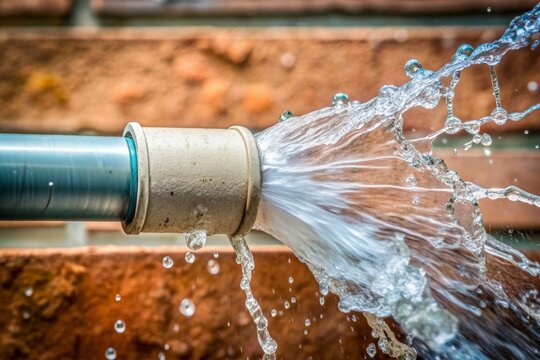Protecting Against Burst Pipeline: Necessary Tips to Shield Your Pipes
Avoiding burst pipelines is a crucial issue for homeowners, especially during colder months when the risk of cold is enhanced. Executing tactical steps such as correct insulation, regular examinations, and preserving consistent indoor temperature levels can dramatically reduce the likelihood of pipeline failing.
Understand Pipeline Vulnerabilities
Recognizing pipeline susceptabilities is important for effective plumbing maintenance and preventing costly damages. Several aspects contribute to the sensitivity of pipes to ruptureds, consisting of product make-up, age, and ecological problems. Older pipelines, particularly those made from galvanized steel or polybutylene, often deteriorate gradually, leading to boosted danger of leakages and tears.
Temperature variations can also significantly influence pipe integrity. In cooler environments, water caught in pipes can ice up, increasing and exerting stress on the pipe walls, which might ultimately cause a burst. Moreover, high water stress can stress pipelines, especially at bends and joints, heightening the likelihood of failure.

Insulate Pipes Effectively
Proper insulation of pipelines is critical for preventing cold and succeeding ruptureds throughout winter (burst pipe). Protecting your pipes system efficiently safeguards versus temperature drops that can bring about pricey damage. Begin by determining susceptible areas where pipes are subjected to exterior temperature levels, such as cellars, attics, and outside walls
Usage foam pipeline insulation sleeves or wrap insulation tape around these locations to provide a protective barrier. Ensure that all areas of the pipelines, particularly those with restricted heat direct exposure, obtain appropriate insulation. Pay unique focus to fittings and joints, as these are a lot more prone to cold.
When insulating, it's important to select products that satisfy local building ordinance and are proper for the specific environment. For instance, fiberglass insulation is commonly advised for its thermal resistance properties - burst pipe. In addition, consider making use of warm cables or tape in extreme conditions, which can be connected in to provide supplemental heat
Regularly examine protected pipes for any kind of indications of wear or damage, as endangered insulation can diminish its performance. By taking these proactive measures, you dramatically lower the danger of pipe ruptureds, making certain a reliable pipes system throughout the winter season.
Maintain Regular Temperature Level
A secure interior temperature is essential for stopping burst pipelines throughout the cold months. When temperatures decrease, water within pipelines can freeze, increasing and producing stress that might ultimately create the pipes to ruptured.Making use of a programmable thermostat can aid handle interior temperature levels successfully, making sure that areas with plumbing continue to be warm even when the residence is vacant.
This minor flow of water can prevent cold by reducing pressure within the pipelines. By implementing these methods, house owners can considerably lower the risk of pipeline bursts and safeguard their plumbing systems versus the severe winter components.
Routinely Check Plumbing
Normal assessments of plumbing systems are learn the facts here now vital for preventing burst pipelines and preserving general home integrity. Throughout these evaluations, it is necessary to analyze noticeable pipes for signs of rust, leaks, or wear.
Furthermore, inspecting joints and connections is crucial, as these factors are often at risk to leaks. Homeowners should also evaluate water pressure degrees, as excessive stress can stress the plumbing system and raise the risk of pipe bursts.
Think about organizing specialist pipes assessments at the very least annually, specifically before winter months, to ensure your system is gotten ready for colder temperature levels. Regular assessments not just assist in identifying immediate problems yet additionally foster lasting upkeep strategies that can improve the life expectancy of your pipes system. By being proactive in your strategy, you can guard your home versus the pricey and disruptive effects of ruptured pipelines. Prioritizing plumbing assessments is a financial investment in your house's wellness and security.
Know Emergency Treatments
Understanding emergency situation procedures is crucial for every single house owner, specifically after performing routine plumbing inspections. Being gotten ready for a plumbing emergency can substantially alleviate damage and save expenses. First, locate your main water shut-off shutoff; it is typically discovered near the water meter or where the main line enters your home. Acquaint on published here your own with its operation, as shutting down the water supply promptly can avoid comprehensive flooding.
Following, maintain crucial devices handy. A pipes emergency kit must include a wrench, plunger, and towels, along with a flashlight and a pail for small leaks. In addition, think about having the get in touch with info for a relied on plumber readily available, must the situation escalate beyond your control.
If you detect a leakage or ruptured pipe, right away switch off the water and alert your plumbing. Record the damages with pictures for insurance purposes. Recognize the signs of possible plumbing concerns, such as unusual water stress fluctuations or damp spots on walls
Eventually, proactive understanding and quick activity are crucial in handling plumbing emergency situations, guaranteeing your home stays protected and lessening potential damages.

Final Thought
In verdict, avoiding burst pipes requires a multifaceted strategy that includes understanding pipe susceptabilities, proper insulation, keeping regular interior temperature levels, regular inspections, and burst pipe expertise of emergency treatments. By applying these important strategies, the risk of plumbing failures can be dramatically lowered, therefore ensuring the long life and efficiency of the plumbing system. Aggressive procedures not just safeguard versus prospective damages yet additionally add to total water conservation and the security of residential property.
In colder climates, water caught in pipelines can freeze, increasing and putting in stress on the pipe walls, which might ultimately lead to a ruptured. When temperature levels drop, water within pipes can ice up, creating and increasing pressure that might eventually cause the pipes to ruptured. By carrying out these techniques, house owners can substantially lower the risk of pipeline bursts and protect their plumbing systems versus the rough winter season elements.
